In which we take the GX camping at the 2015 Pikes Peak International Hill Climb
At the end of June, I drove from Denver to Pikes Peak and covered the Pikes Peak International Hill Climb for this publication. Last year, I camped with some friends at Halfway Picnic Ground after climbing up the mountain in a caged Checker Marathon race car. This was fun, but even a race-winning Checker has a lot of drawbacks when it comes to such activities as driving off-road to a campsite, hauling a lot of camping equipment and seating passengers in comfort above lawn-chair-in-boxcar levels.
After having such a good experience taking a Toyota truck to the site of the first atomic bomb explosion, I decided to try a more luxurious Toyota truck: the 2015 Lexus GX.
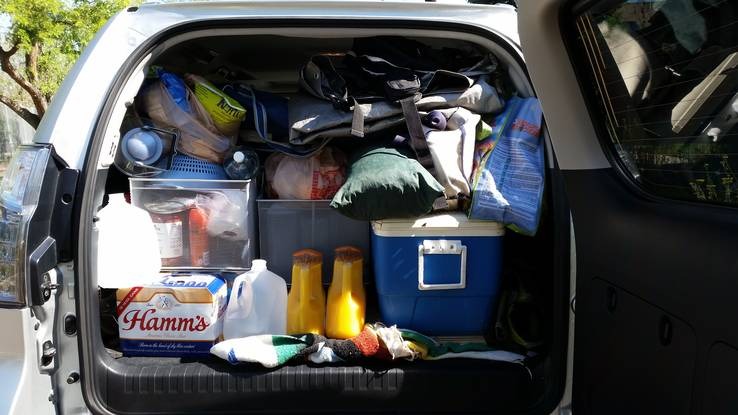
We had three people riding in the Lexus and we expected to meet up with three more at the campsite, which means a lot of gear.
Three people would be riding in the GX, and we planned to meet a few more at the campsite. Since we wanted to cook a nice Italian dinner on Saturday night, we brought quite a bit of gear. At this point, I ran into the issue that always comes up when packing an SUV: from the outside, they look like they ought to have a lot more cargo room than they actually have on the inside. In order to do real-truck things off-road, these trucks have full frames and lots of bulky mechanical gear underneath; coupled with the need to have existence-of-outside-world-denying sound insulation plus crash protection, this results in a vehicle that holds about as much stuff as much smaller wagons or hatchbacks.
I was joking when I told my fellow campers that my beater ’92 Honda Civic holds as much stuff as this 5,000-plus-pound monster, but we ended up filling up one of the back seats with our stuff. This isn’t Toyota’s fault — they have done a nice execution of a midsize SUV here — but it points out the reality that a lot of buyers of trucks like this (i.e., the ones who never leave the asphalt as they drive from home to work to mall) aren’t making their vehicle purchases for logical reasons.
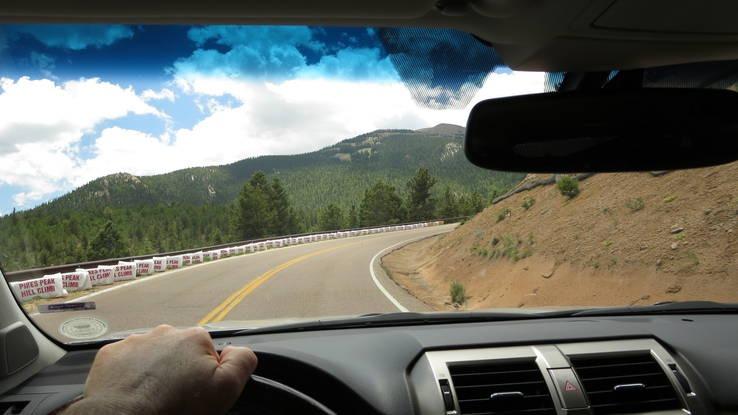
Heading up Pikes Peak, with power to spare even at five-digit elevation.
At this point, I was thinking that I’d have been better off getting a super-plush and roomy Lexus LS 460 F Sport, but the GX460 turned out to be very civilized on the highway south to the mountain. A benefit of driving a big silver luxury SUV in the Denver area is that I (finally) felt that I fit in with my fellow Coloradans; this is the vehicle type of choice for a huge chunk of the population in these parts, with the Detroit, German, and Japanese variations on this theme visible on every road at any time.
One small thing that seems noteworthy is the lack of pain involved with pairing a Bluetooth device and — nearly as important — resuming the connection after a shut-down/restart of the vehicle; if a Mercedes-Benz scores a 100 on the put-your-fist-through-the-dash-out-of-frustration-O-meter when it comes time to get your phone to talk to the vehicle, this truck scores about a 19.
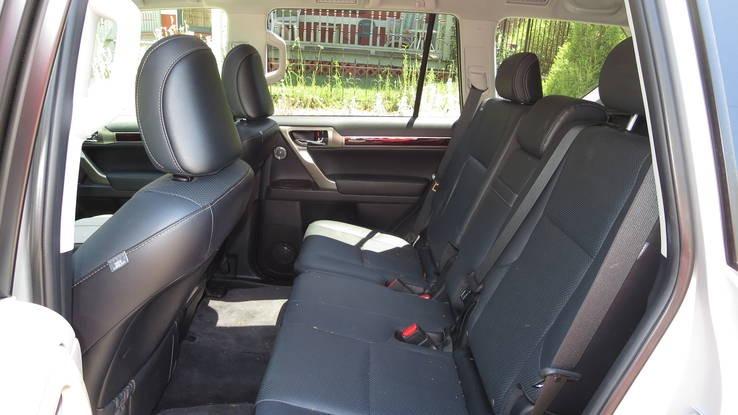
The back seat offers comfortable seating for two, cramped seating for three.
Lexus doesn’t bother to make the interior of their cars feel like oppressively stultifying London hunting lodges in 1899; instead, everything here is very comfortable and Toyota-sensible. There’s a powered fold-up third-row back seat, which I never used, and space for a theoretical third passenger in the middle of the second-row seat, but in most cases, this vehicle will be treated as a very large four-seater.
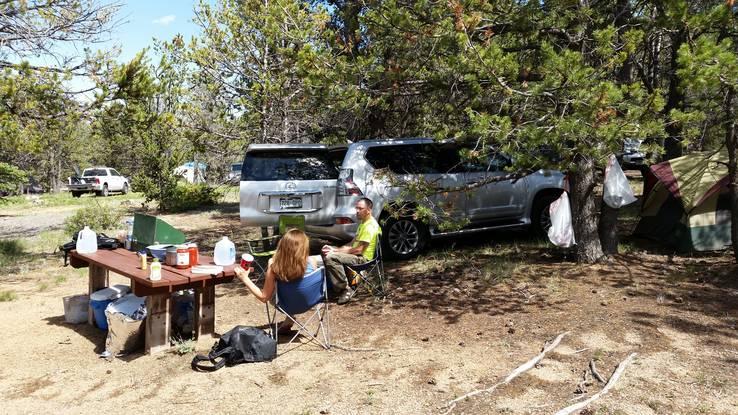
The side-opening rear hatch spares you the worry of bonking your head during operation, but otherwise just got in the way of camping.
Once we got to the camping area, reaching the primo spaces with the picnic tables mandated that I drive the GX a few hundred yards over some mild bumps and tree roots — nothing that most subcompacts couldn’t have handled, but the Lexus plowed right over them like the Land Cruiser Prado it is. Soon after getting unpacked and starting dinner, I realized that there are no sources of electronic-device-charging power that are powered up when the vehicle is shut down, and I didn’t feel like futzing with endless menu settings to make the truck’s accessory setting avoid “battery-saving” mode automatically. This was something of a headache, but one that a real-world owner of the GX would sort out quickly.
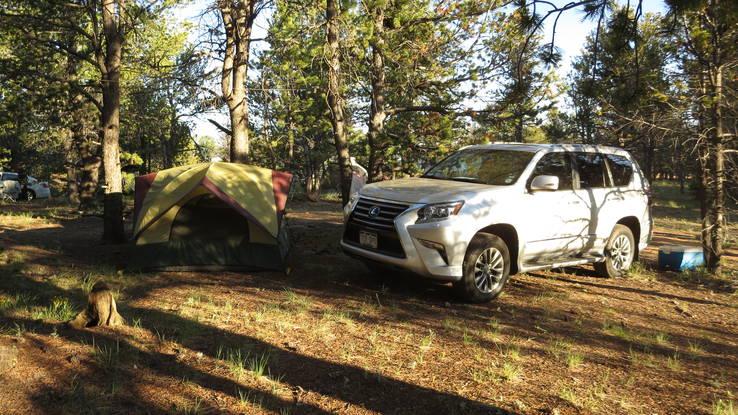
A few hours after this, rowdy Pikes Peak spectators would turn this tranquil setting into a party zone.
The GX turned out to be a good base of operations for me as a Race Reporter, especially when a wild lightning-and-hail-and-snow-storm blew in during the afternoon of race day and I had to sit it out in the Lexus. I was able to document the Pikes Peak EV record being broken and fit everything back in the truck for the ride home afterwards.
I still think this type of vehicle doesn’t make sense for most people, but that it’s a good choice if you’re the rare individual who needs luxury on the highway and the ability to crash through the woods to your remote cabin in Alaska.



























